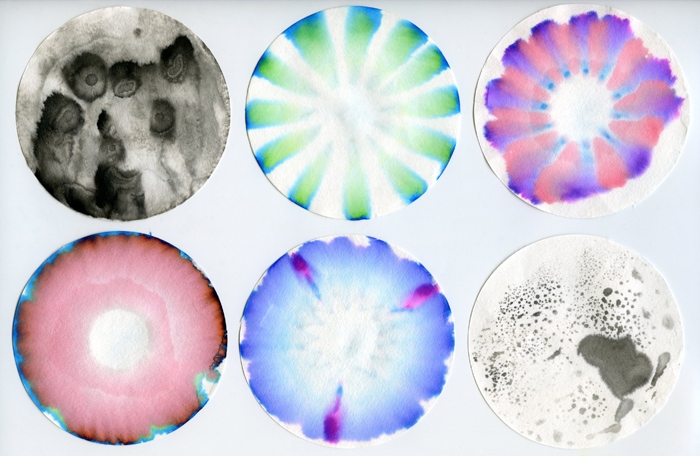To explore further possibilities of including diffusion in this project, I experimented with filter papers.
This was a suggestion that came from a colleague on my course, Sara Cooper, during a conversation about what we are both doing on our options modules. Filter papers for experiments come in 90mm circular pieces, so they fit inside the Petri dishes I have, creating an instant connection between materials.
Filter papers allow the passage of liquid through them (think of filter coffee) and so an interesting experiment is to draw on them with water-based pens/inks, and then introduce water to see how it affects the image (CAYF, 2013)
I started by sketching from the photographs I have taken in the studio:
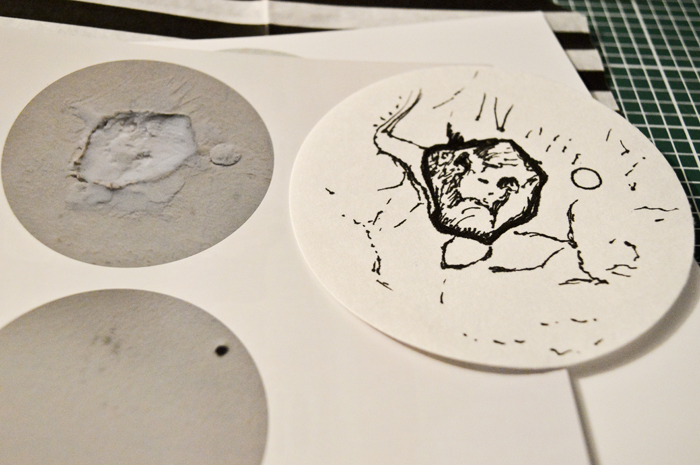
This gives me the opportunity to introduce a different kind of art process into the project. However, I do not feel a very strong personal connection to illustrative drawing so perhaps this isn’t a good route for me.
I then changed approach by introducing simple patterns and shapes to the filter papers that respond to the circular form.

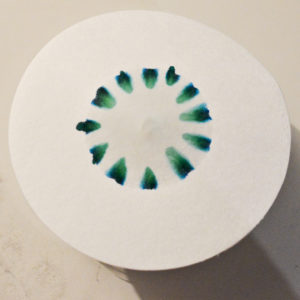
In the first image in this post, the bottom left result is achieved from a single black circle! The different colours of the ink have been pulled out (diffused) at different rates, separating them on the paper.
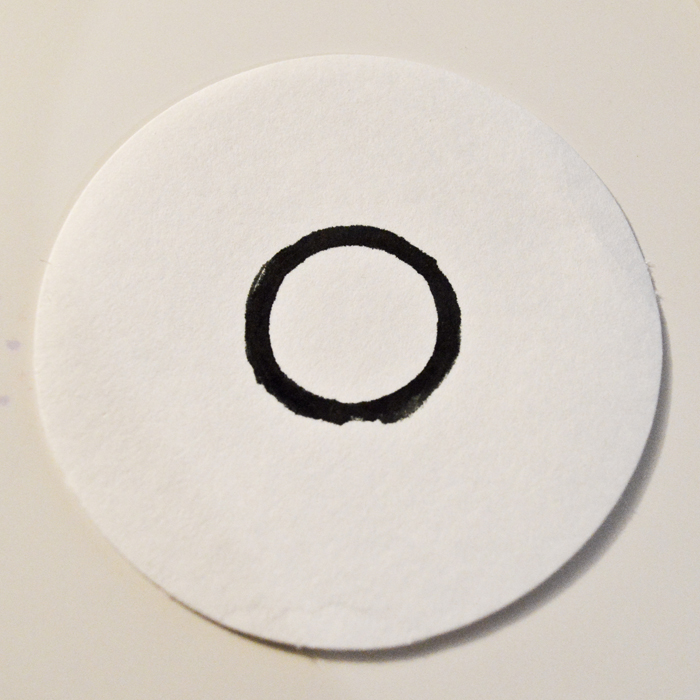
I also particularly liked this watermark that was left behind under the filter paper on my desk:
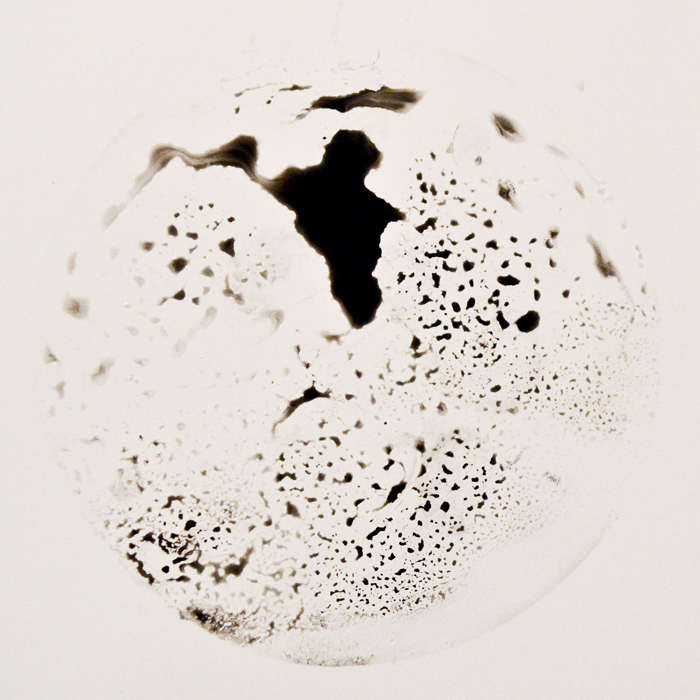
This accidental image speaks to the idea of ‘evidence of process’. I took a print of this on another piece of filter paper, further peeling apart layers of referent and symbol:
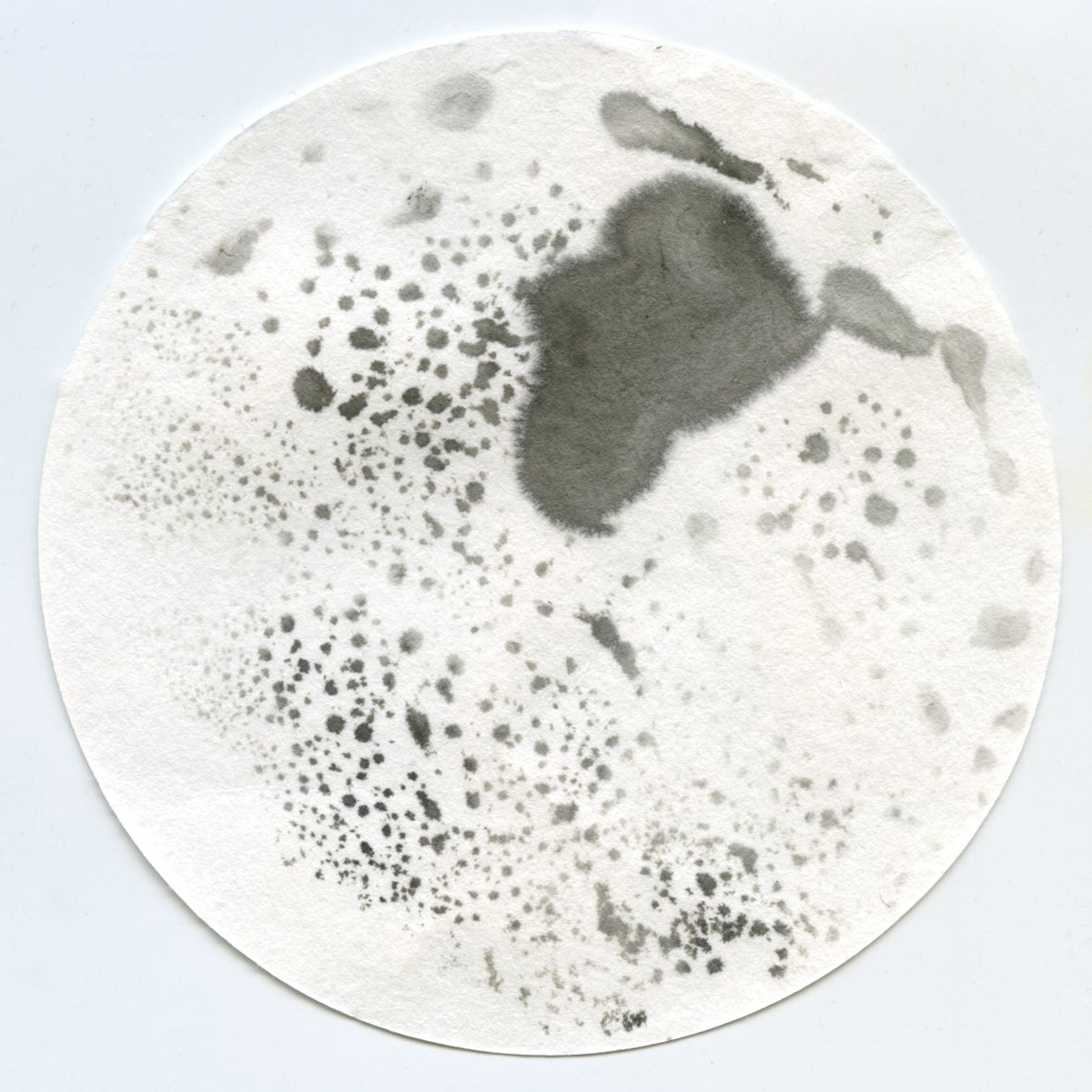
When these images are scanned in close-up, they also reveal some interesting details:

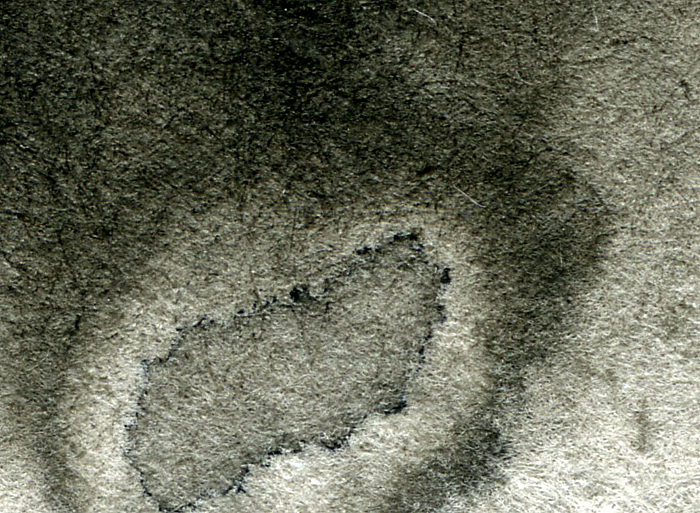
There’s a softness to the fibres of the paper, and the ink appears like veins in places. Like with the dye diffusion in agar, the final result is down to an element of chance: which way the water will travel and for how long. Some of the results, in close up, appear amoeba-like, going back to the forms of microbes.
This has been an interesting experiment and I like the potential of introducing colour and other art materials into the project. However, I feel I need to tread carefully to avoid the piece becoming convoluted and messy. I know I will be using photography taken from the studio, which depicts left-behind evidence of artistic process (e.g. paint splatters on the wall), as well as Petri dishes, agar and (hopefully) grown microbial samples. The introduction of ink/paint and paper could be too much and distract from the main focus of the project. I will need to consider a ‘soft-touch’ with these materials, so they embellish the overall aesthetic without distracting from the concept.
References:
Chemicals Are Your Friends. 2013. How to make Chromatography Flowers! [ONLINE] Available at: http://chemicalsareyourfriends.com/sliders/how-to-make-chromatography-flowers/. [Accessed 28 January 2017].
